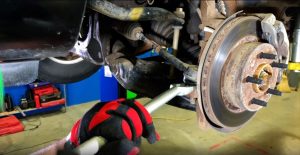
Brake pads are essential for vehicle safety, but their old age can be considerably impacted by chauffeur habits and support practices. Understanding the common mistakes that lead to impulsive brake pad wear can help drivers sustain money and guarantee the continued dependability of their braking system.
This item dives deep into the pitfalls that can diminish the life of your brake pads and contributes practical recommendations to help you maintain optimum braking performance.
Driving Habits That Hasten Brake Pad Degradation
Driving style plays a significant duty in brake pad longevity. Aggressive driving habits, while frequently seen as a measure of performance, are repeatedly detrimental to brake pad existence.
· Aggressive Braking:
Repeated, hard braking, especially all along sudden stops and assertive deceleration, considerably accelerates brake pad wear.
· Frequent Short Stops:
While not as damaging as aggressive braking, frequent short stops, like those attacked in city driving, can still influence premature wear. The uninterrupted cycling of braking and issuing can cause increased disagreement and heat buildup, chief to faster pad shame.
· Riding the Brakes:
This practice, where the brakes are used to assert a constant speed alternatively using the weapon’s deceleration, is a meaningful contributor to brake pad wear. The continual pressure on the brakes leads to a significant heat era and faster wear.
· Ignoring the “Brake Pedal Feel”:
Paying close attention to the machine feel is crucial. A progressively harder pedal displays a potential issue, such as reduced pad material, needing a professional inspection.
Maintenance Oversights and Their Impact
Beyond driving habits, maintenance practices can significantly impact brake pad old age.
· Ignoring Warning Signs:
Ignoring subtle signs like an absorbent or pulsating brake to a bicycle, a squealing or grinding buzz, or a noticeably more interminable stopping distance can bring about serious issues. These early signs often signal a question that will only diminish if ignored.
· Improper Brake Fluid Levels:
Adequate brake fluid levels are fault-finding for proper hydraulic pressure. Insufficient fluid can cause the brake to dwindle, leading to raised braking effort and more resistance, ultimately quickening pad wear. For expert help, you can contact an auto repair shop in Clearfield, UT.
· Ignoring Brake Pad Thickness:
Regular inspection of brake pad density is essential. Thin pads lead to raised friction and heat development, which considerably expedites wear.
· Using Incorrect Brake Pads:
Using brake pads that are not compatible accompanying your vehicle’s qualifications can lead to impulsive wear and potential performance issues. Using the wrong pad material can again exacerbate the erosion.
Conclusion: Proactive Measures for Extended Brake Pad Life
Proper maintenance, ensuring able brake fluid levels, and using the correct brake pads, will improve the endurance of your braking system. By understanding these determinants, drivers can save their safety and spend money on damaging replacements.
Remember, the cost of preventative measures is far inferior to the expense and inconvenience of secondary braking system repairs.






